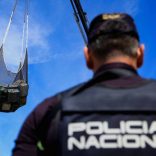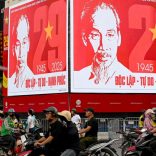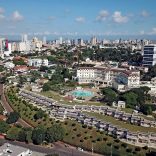As the UN Ocean Conference opens in France, a push to turn promises into protection
Britain and India clinch landmark deal in “new era” of trade

]FILE - Britain's Secretary of State for Business and Trade Jonathan Reynolds meets Indian Minister of Commerce and Industry Piyush Goyal for trade talks, in London, Britain, April 28, 2025. [File photo: Department for Business and Trade/Handout via Reuters]
Britain and India clinched a long-coveted free trade pact on Tuesday after tariff turmoil sparked by U.S. President Donald Trump forced the two sides to hasten efforts to increase their trade in whisky, cars and food.
The deal, between the world’s fifth and sixth-largest economies, has been concluded after three years of stop-start negotiations and aims to increase bilateral trade by a further 25.5 billion pounds ($34 billion) by 2040 with liberal market access and eased trade restrictions.
Indian Prime Minister Narendra Modi said the trade deal was “ambitious and mutually beneficial”. British Prime Minister Keir Starmer said it would strengthen alliances and reduce trade barriers in this “new era for trade”.
The deal lowers tariffs on goods such as advanced manufacturing parts and food products, and agrees to quotas on both sides for auto imports.
It will allow more British firms to compete for contracts in India, and enable Indian workers to travel to Britain for work, without changing Britain’s points-based immigration system.
Both countries are also seeking bilateral deals with the United States to remove some of Trump’s tariffs that have upended the global trade system, and the resulting turmoil sharpened focus in both London and New Delhi on the need to clinch a UK-India trade deal.
The pact marks India opening up its long-guarded markets, including automobiles, setting an early example for the South Asian nation’s likely approach to dealing with major Western powers such as the U.S. and the European Union.
It also marks Britain’s most significant trade deal since it left the European Union in 2020.
Stop-start
Talks over a free trade deal between India and Britain were initially launched in January 2022, and became a symbol of Britain’s hopes for its independent trade policy after Brexit.
But negotiations were stop-start, with Britain having four different prime ministers since that launch date and elections in both countries last year.
Britain’s Labour Party, elected last July, moved rapidly to conclude a deal after restarting talks in February, with last-minute talks between the countries’ trade ministers in London last week enough to clinch a deal.
Whisky tariffs will be halved from 150% to 75% before reducing to 40% by the deal’s tenth year.
The deal also covers rules of origin regulations, giving access to manufacturers to lower tariffs even if they use inputs from other places.
And it includes provisions on the services sector and procurement allowing British firms to compete for more contracts in India. On visas, there are provisions regarding business mobility to make it easier for professionals to travel with their work.
Talks over a bilateral investment treaty were not concluded alongside the free trade agreement, although a treaty on social security contributions was struck.
($1 = 0.7472 pounds)












Leave a Reply
Be the First to Comment!
You must be logged in to post a comment.
You must be logged in to post a comment.